6 Low-Maintenance Ornamental Grasses That Thrive on Neglect and Add Year-Round Color and Texture
Perennial gardening often requires commitment and work, but these low-maintenance ornamental grasses create texture and movement with minimal effort – win-win for lazy gardeners!


Amy Draiss
Low maintenance ornamental grasses are surging in popularity! Besides adding movement, structure, color, and texture to the landscape, people are discovering their ease of care. Many varieties and cultivars are drought tolerant, and their showy flowers and seed heads extend their beauty well into winter. And the best bit? These dynamic garden stalwarts are so easygoing, they thrive year round even when neglected.
Yes, you can leave these gorgeous tough and textural beauties to their own devices, more or less, and they still look great. Although ornamental grasses generally need well-draining soil and sun to thrive, most tolerate poor soil and don’t need fertilization, unless a soil test deems it necessary. Once established, they require little (if any) supplemental water, depending on grass variety. You just need to cut them back in spring and divide plants occasionally to keep them healthy. Here are the ultimate ornamental grass varieties for lazy gardeners to love all year round.
What exactly are Four-Season Ornamental Grasses?
Ornamental grasses are classed as warm season or cool season varieties. Warm season grasses grow readily in spring and summer, followed by attractive flowers and seedheads, but then growth slows in autumn. They go dormant in winter. If you leave the foliage and seedheads intact, they provide winter interest as well as food for songbirds and small mammals.
Cool season grasses thrive in cooler climates and are most vibrant when the weather is cool, in early spring and early summer, then again in fall. During the heat of summer, foliage stops growing, but as soon as temperatures cool down again, green grass returns. They go dormant again during winter. Cool season grasses flower in late spring or early summer. Four-season ornamental grasses look great year round, from spring interest through to fall color. They display decorative flowers and seed heads and colorful foliage that persist well into winter.
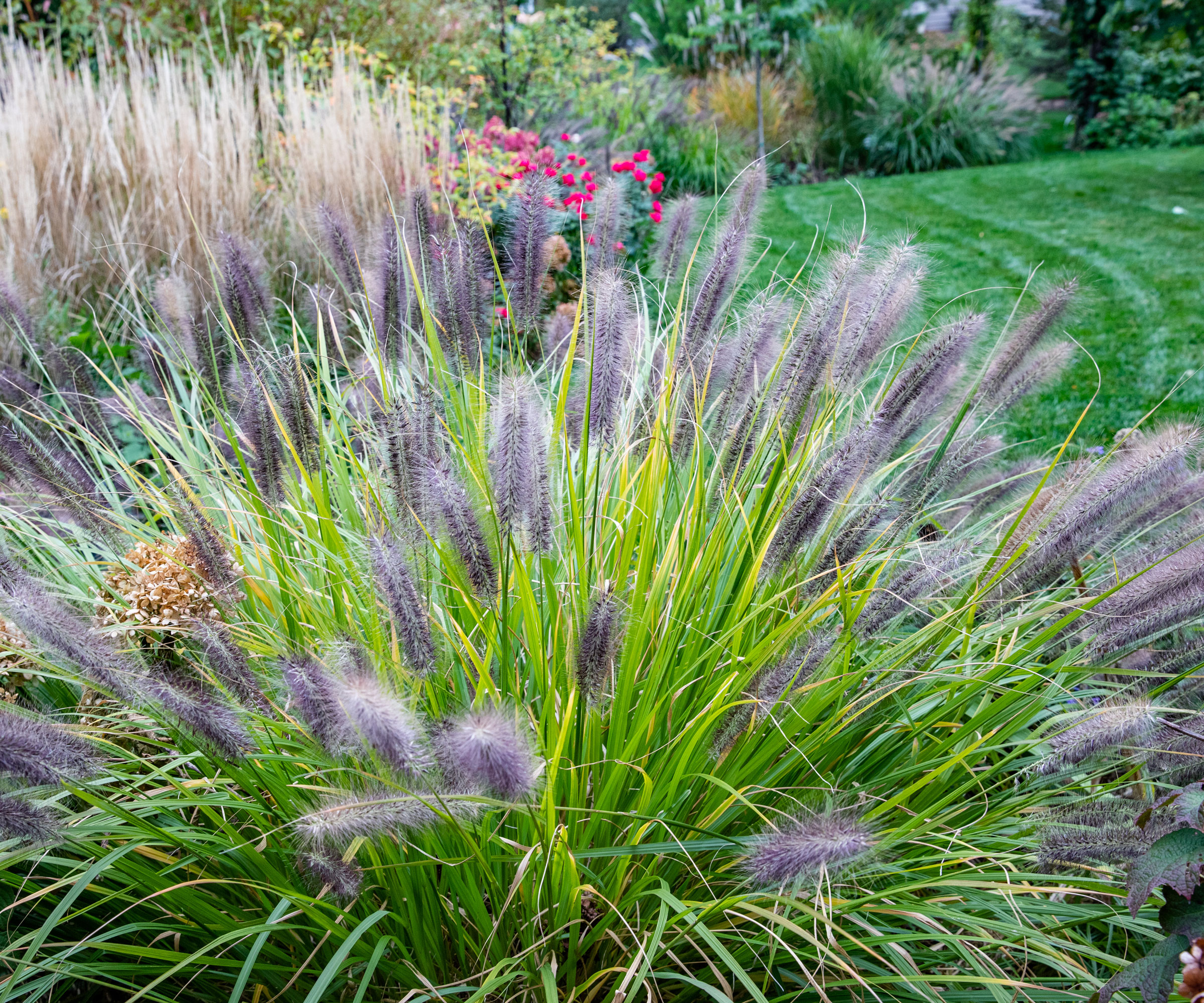
Best Four-Season Ornamental Grasses
Ornamental grasses are ideal for groundcovers, erosion control, hedging and screens,, creating sensational borders and specimen plants. Tall- and medium-sized grasses make good privacy screens, hedges, or background plants for a perennial border. Smaller grasses make excellent groundcover or erosion control on a slope. Ornamental grasses are often interplanted among flowers or used as edging plants.
A few native ornamental grasses thrive year round thanks to their hardiness, adaptability and resistance to disease. Grouping them creates an eye-catching display with the grass-like foliage swaying in the breeze. Their decorative plumes and seed heads are great additions to floral displays and last for weeks. Here are 6 perennial ornamental grasses for year round interest.
1. Little Bluestem

Little bluestem (Schizachyrium scoparium) is a native, warm season grass with bluish green foliage that flourishes in USDA zones 3-10. Its foliage grows to 16 inches tall (0.4 m) and changes to copper or bronze in the fall. It produces tan flowers in late summer and autumn, growing on tall, rigid stems which extend the height to 30 inches tall (0.8 m) or more, perfect for a low maintenance native garden with year round interest.
Sign up for the Gardening Know How newsletter today and receive a free copy of our e-book "How to Grow Delicious Tomatoes".
Cultivars of little bluestem include ‘Blue Paradise’ (blue-purple foliage), ‘Brush Strokes’ (powder blue foliage that turns red), ‘Twilight Zone’ (pale blue foliage with purple tips) and ‘Standing Ovation’ (blue-green foliage which turns orange red). You can buy ‘The Blues’ Little Bluestem Grass from Nature Hills as a live plant.
2. Switchgrass

Switchgrass (Panicum virgatum) is a warm-season US native with green-blue foliage that turns gold in fall. The airy seedheads seem to float above rigid stems that stand up well to winter. This beautiful ornamental grass that pollinators love will tolerate clay or sandy soil. It can reach 3-6 feet tall (0.9-1.8 m), and wildlife is well served with food and shelter.
Lovely switchgrass cultivars include ‘Northwind’ (gray-green foliage), ‘Shenandoah’ (red tipped green foliage), ‘Cheyenne Sky' (blue-green foliage that turns red), and ‘Heavy Metal’ (metallic blue leaves with pinkish panicles). This grass thrives in USDA hardiness zones 4-9. You can buy Switchgrass ‘Shenandoah’ from Fast Growing Trees at a discount while stocks last.
3. Pink Muhly Grass

Pink muhly grass (Muhlenbergia capillaris) is another North American native, and one of the most impactful ornamental grasses for all seasons. This warm season grass reaches 2-3 feet tall (0.6-0.9 m) and up to 4 feet (1.2 m) when in bloom. It is perfect for a border, groundcover or en masse. The more sun it receives, the more pinky purple flowers it produces, for a showy late summer display.
Pink muhly grass is hardy in zones 5-9. Leave the tan seed plumes of this dazzling muhly grass intact for winter interest. The tiny purple seeds are eaten by songbirds and small mammals. Cultivars include ‘Pink Flamingo',’ Regal Mist ‘Lenca,’ and ‘White Cloud,’ with billowy, white flowers. Buy Greenwood Nursery Store Pink Muhly Grass as live pot plants from Amazon.
4. Bottlebrush Grass
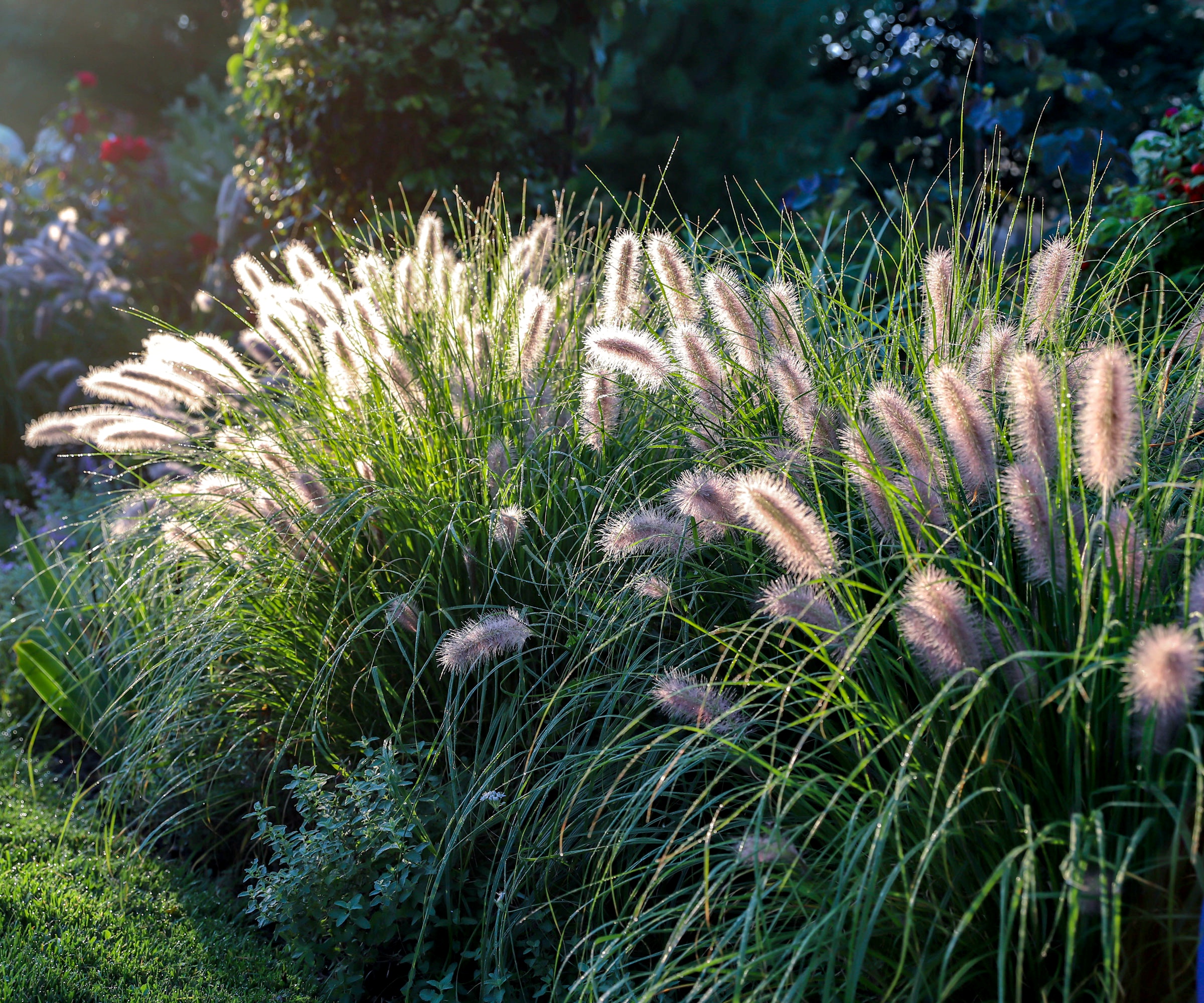
Bottlebrush grass (Elymus hystrix) is a native cool season grass which is perfect for shady areas. It actively grows in spring and produces flowers and seedheads during summer. Its chartreuse foliage reaches 2.5-3 feet (0.8-0.9 m) tall. The bottlebrush grass plant blooms for many weeks and the seedheads really do resemble bottlebrushes. It thrives in USDA hardiness zones 3-7.
A white, waxy substance on the stems and seedheads makes this ornamental grass a standout in the garden. It grows in partial sun or shade, and prefers average to moist soil. It may self-sow, but it is not aggressive. You can buy packs of seeds for Everwilde Farms Bottlebrush Grass from Amazon.
5. Feather Reed Grass

Feather reed grass (Calamagrostis x acutiflora) is a hybrid of two species. ‘Karl Foerster’ is the most common cultivar, and was named perennial plant of the year in 2001 for its attractiveness, versatility and low maintenance. Its green, glossy foliage reaches 2 feet tall (0.6 m). In flower, expect this grass to exceed 5 feet (1.5 m).
This cool season grass produces pink plumes that change to maroon, then bronze, then fade to tan in winter. It is hardy in USDA zones 3-9 and works well with other late flowering perennials such as echinacea and coreopsis. The ‘Avalanche’ variety boasts variegated foliage with a central white stripe. You can buy Feather Reed Grass ‘Karl Foerster’ from Nature Hills as live plants.
6. Prairie Dropseed
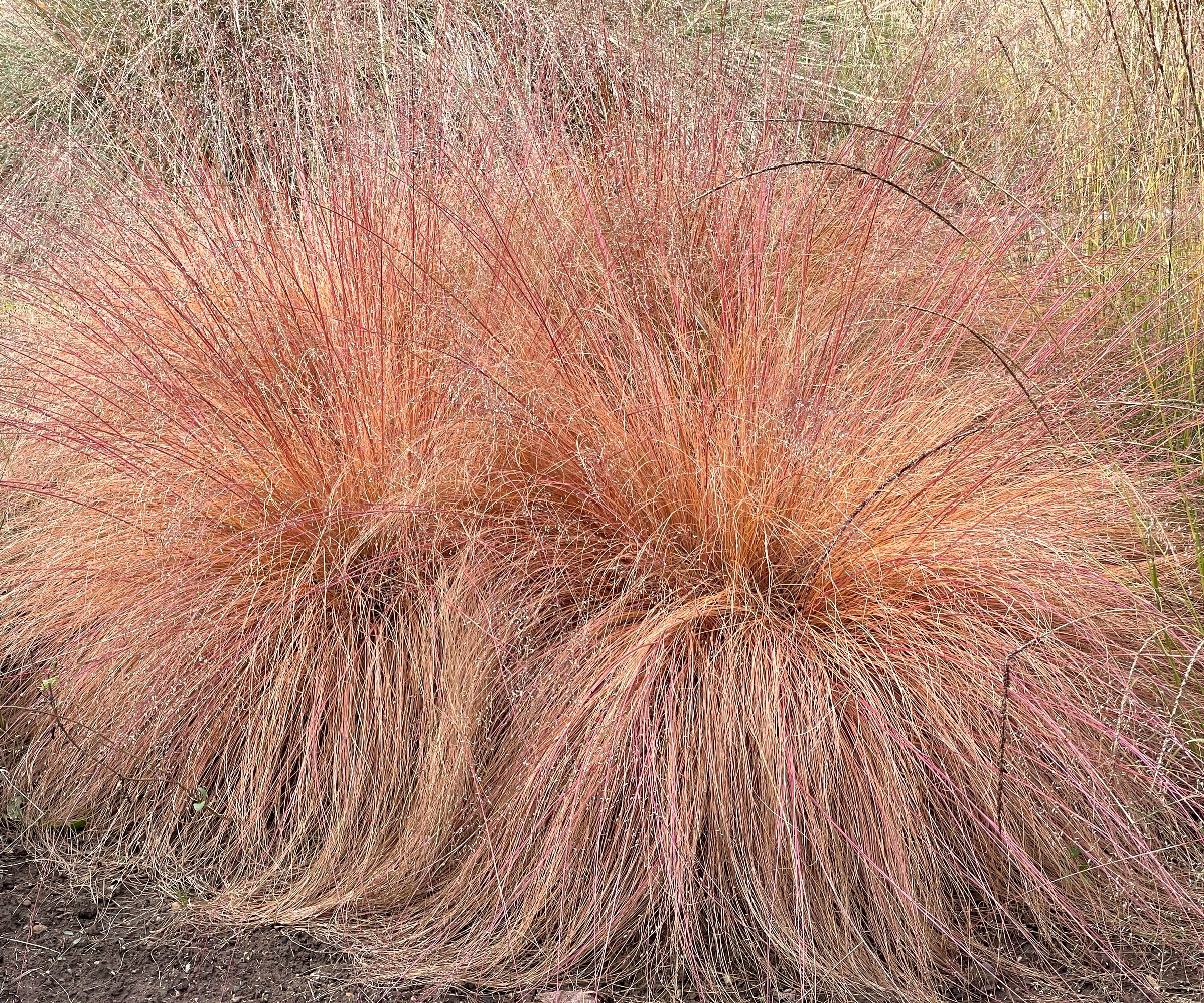
Prairie dropseed (Sporobolus heterolepis) is an excellent groundcover or erosion control plant. This warm-season native grass tops out at 2 feet (0.6 m). Its showy fall flowers are also deliciously fragrant, with a buttery popcorn or melting wax scent. Summer’s fine-textured, arching green leaves turn orange in autumn, creating dazzling fall interest with big curb appeal, evolving to copper for winter interest.
Despite its name, prairie dropseed does not easily grow from seed. However, wildlife will enjoy the dropped seeds. This gorgeous ornamental grass thrives in USDA zones 3-9. You can buy Perennial Farms’ Prairie Dropseed Ornamental Grass from Amazon as live plants.
Little Care Tips for Big Impact
The most important care tip for these lovely ornamentals is to cut back your grasses each year before new growth starts in early spring. Prune ornamental grasses to 6 inches (15 cm) above ground. You can use pruners, hedge trimmers, or a weed eater with a brush cutting blade. For slicing through bulk grasses at speed and with confidence, try the highly rated Greenworks 24V 22in Cordless Laser Cut Hedge Trimmer from Amazon.
Ornamental grasses also benefit from division every three to five years, depending on the species. If the center starts dying out, it is time to divide. You can use a shovel or hatchet to dig plants up. Buy the Fiskars D-Handle Digging Shovel from Amazon for powerful control and comfort while digging. Roots are deep and sturdy, so digging and dividing can be a workout, but it’s an effective way to propagate your ornamental grass and keep it in good shape. The best time to divide is early spring for warm and cool grasses, but cool grasses can also be divided in fall.
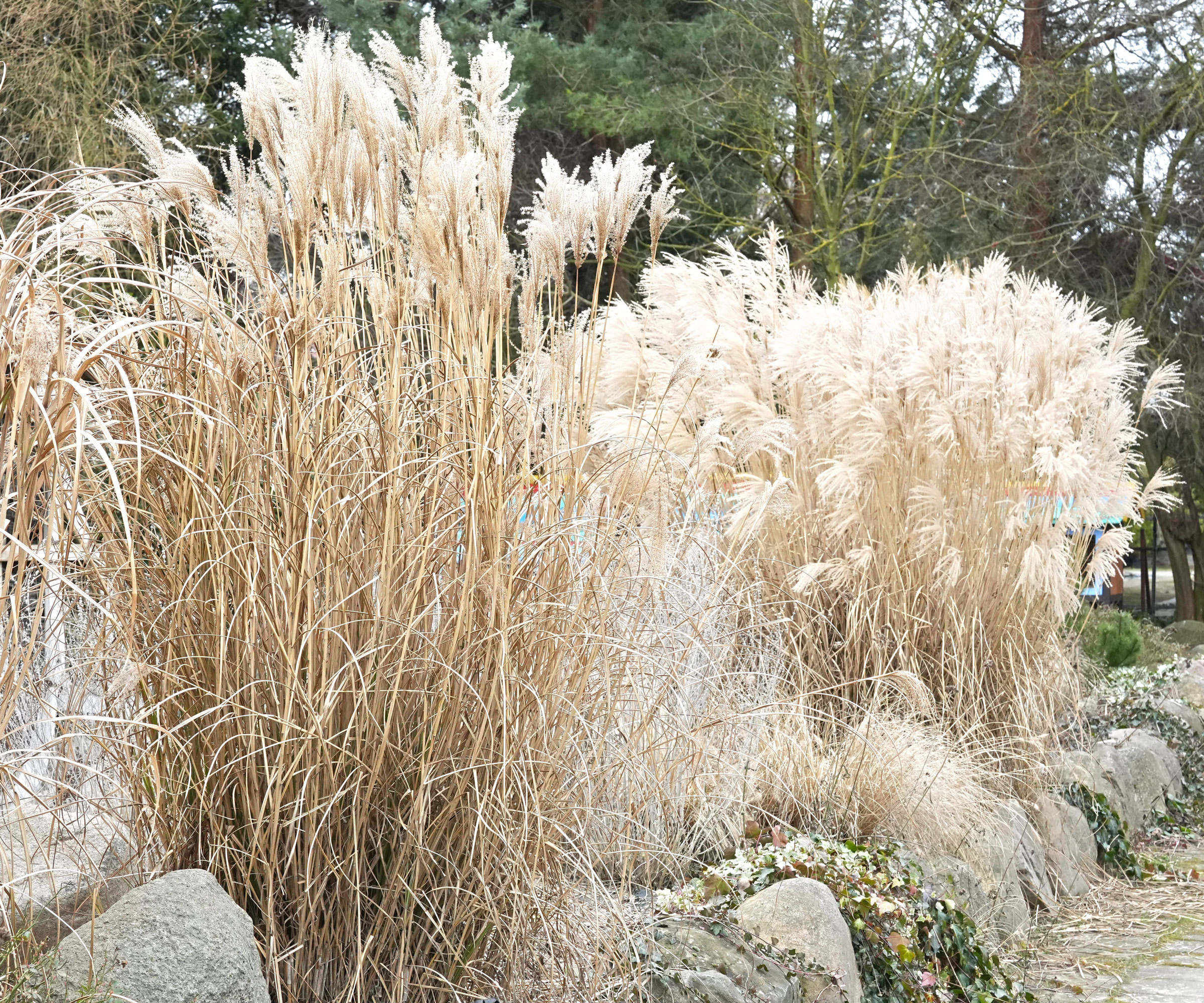
Don’t Forget: Invasive Species
Avoid invasive ornamental grass species that multiply readily from seed or rhizomes, displacing native plants. One Asian species that is identified as invasive is Chinese silver grass (Miscanthus sinensis), a popular grass sold in nurseries. Cultivars such as 'Adagio,' 'Gracillimus,' 'Strictus,' and 'Zebrinus' should be avoided. However, giant miscanthus, a sterile hybrid, should be safe.
Fountain grasses, such as the non-native Chinese fountain grass (Cenchrus alopecuroides) and crimson fountain grass (Cenchrus setaceus) can escape cultivation and cause problems. Red flag cultivars include ‘Little Bunny’, ‘Red Head’ and ‘Hamlein’ grasses. Hardy pampas grass (Saccharum ravennae) can be invasive if allowed to reseed in wet areas.
Need more ideas for getting the most from your plants, indoors and out, and looking for the best seasonal expert advice delivered straight to your inbox? Sign up for the free Gardening Know How Newsletter!
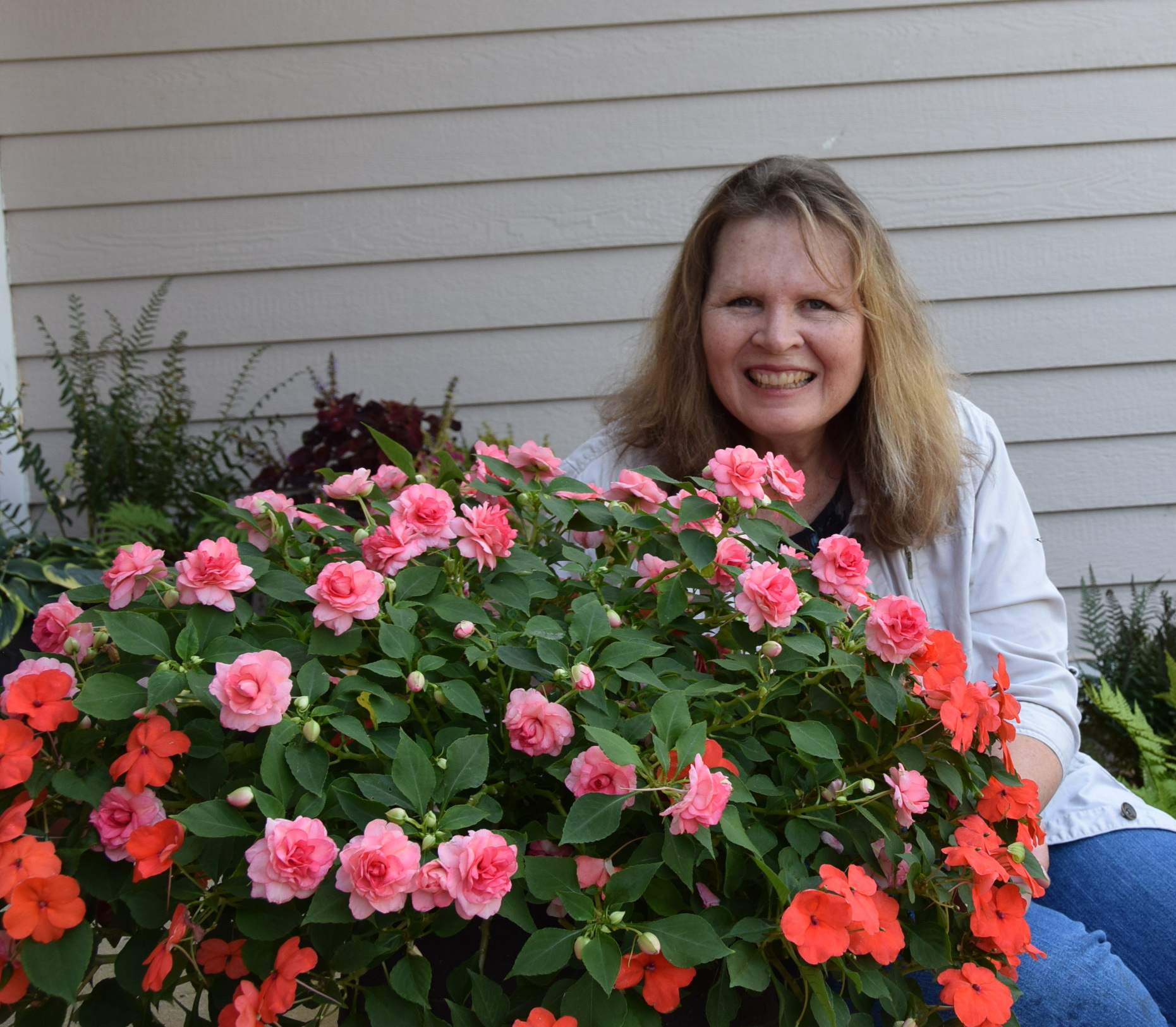
After graduating from Oklahoma State University with a degree in English, Susan pursued a career in communications. In addition, she wrote garden articles for magazines and authored a newspaper gardening column for many years. She contributed South-Central regional gardening columns for four years to Lowes.com. While living in Oklahoma, she served as a master gardener for 17 years.
- Amy DraissDigital Community Manager